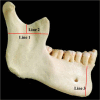Rerouting the Dissection of the Infratemporal and Submandibular Regions
- PMID: 34178540
- PMCID: PMC8223519
- DOI: 10.7759/cureus.15227
Rerouting the Dissection of the Infratemporal and Submandibular Regions
Abstract
Introduction Teaching and learning in anatomy are necessarily dependent on cadaveric dissection. Skillful dissection is the tool which helps in proper visualization of structures in a cadaver. Proper understanding about the course of lingual nerve, hypoglossal nerve, nerve to mylohyoid, and relations between structures present in infratemporal and submandibular regions is important for medical students. The aim of this study is to describe a modified technique of dissection and evaluate medical students' and teachers' response to this approach. Methods The comparative observational study was conducted bilaterally on six adult cadavers. We compared the method of dissection given in standard textbooks with the modified method introduced. The validity and reliability of the newer method of dissection for teaching purpose was assessed by first-year undergraduate medical students using a questionnaire-based tool and feedback from postgraduate students and senior residents. Results The modified method was described as less time consuming, easy to perform, and allowed extensive exploration of the structures in the infratemporal and submandibular regions. Conclusions Proper understanding of the course and relations between structures present in infratemporal and submandibular regions is important for medical students.The modified approach to infratemporal and submandibular regions will facilitate better understanding of the human anatomy.
Keywords: cadaveric dissection; digastric muscle; genioglossus; gland; hypoglossal nerve; lingual duct; lingual nerve; masseter muscle; mylohyoid; temporalis muscle.
Copyright © 2021, Poonia et al.
Conflict of interest statement
The authors have declared that no competing interests exist.
Figures





Similar articles
-
Revisiting the relationship between the submandibular duct, lingual nerve and hypoglossal nerve.Folia Morphol (Warsz). 2018;77(3):521-526. doi: 10.5603/FM.a2018.0010. Epub 2018 Feb 5. Folia Morphol (Warsz). 2018. PMID: 29399751
-
Minimally Invasive Approach to the Lingual and Hypoglossal Nerves in the Adult Rat.J Invest Surg. 2016 Jun;29(3):144-8. doi: 10.3109/08941939.2015.1088602. Epub 2015 Dec 2. J Invest Surg. 2016. PMID: 26633569
-
Do we need dissection in an integrated problem-based learning medical course? Perceptions of first- and second-year students.Surg Radiol Anat. 2007 Mar;29(2):173-80. doi: 10.1007/s00276-007-0180-x. Epub 2007 Feb 21. Surg Radiol Anat. 2007. PMID: 17318286
-
Cadaveric dissection as an educational tool for anatomical sciences in the 21st century.Anat Sci Educ. 2017 Jun;10(3):286-299. doi: 10.1002/ase.1649. Epub 2016 Aug 30. Anat Sci Educ. 2017. PMID: 27574911 Review.
-
Microsurgical anatomy of the hypoglossal nerve.J Clin Neurosci. 2006 Oct;13(8):841-7. doi: 10.1016/j.jocn.2005.12.028. Epub 2006 Aug 28. J Clin Neurosci. 2006. PMID: 16935514 Review.
References
-
- The anatomy of anatomy: a review for its modernization. Sugand K, Abrahams P, Khurana A. Anat Sci Educ. 2010;3:83–89. - PubMed
-
- Human dissection: an approach to interweaving the traditional and humanistic goals of medical education. Rizzolo LJ. Anat Rec. 2002;269:242–248. - PubMed
-
- Surgical anatomy of the infratemporal fossa: the styloid diaphragm revisited. Bejjani GK, Sullivan B, Salas-Lopez E, Abello J, Wright DC, Jurjus A, Sekhar LN. Neurosurgery. 1998;43:842–852. - PubMed
-
- Preauricular transzygomatic anterior infratemporal fossa approach for tumors in or around infratemporal fossa lesions. Ohue S, Fukushima T, Kumon Y, Ohnishi T, Friedman AH. Neurosurg Rev. 2012;35:583–592. - PubMed
-
- Endoscopic transnasal anatomy of the infratemporal fossa and upper parapharyngeal regions: correlations with traditional perspectives and surgical implications. Dallan I, Lenzi R, Bignami M, et al. Minim Invasive Neurosurg. 2010;53:261–269. - PubMed
LinkOut - more resources
Full Text Sources
